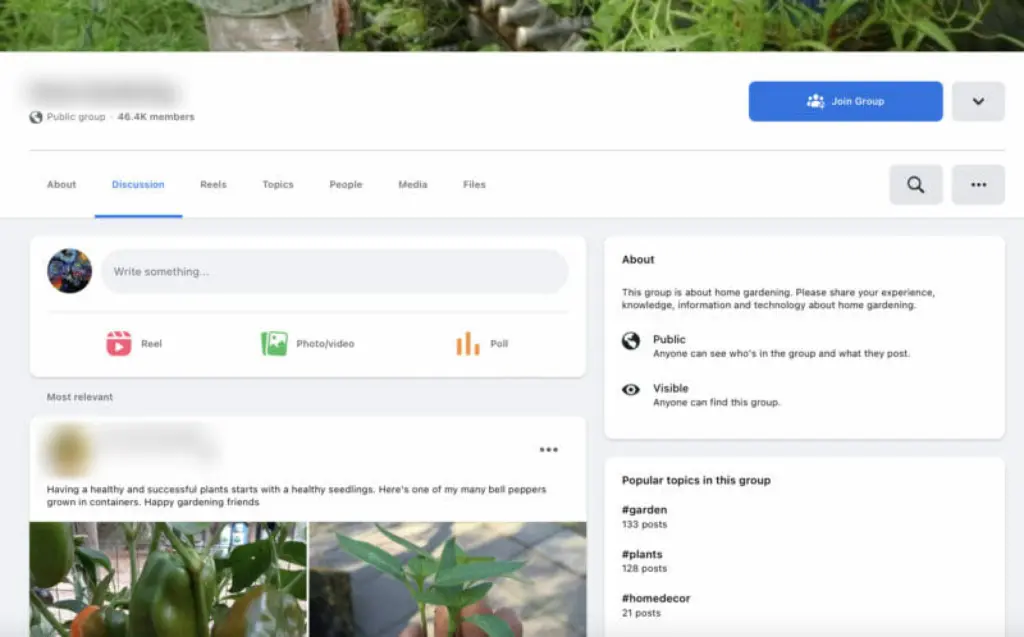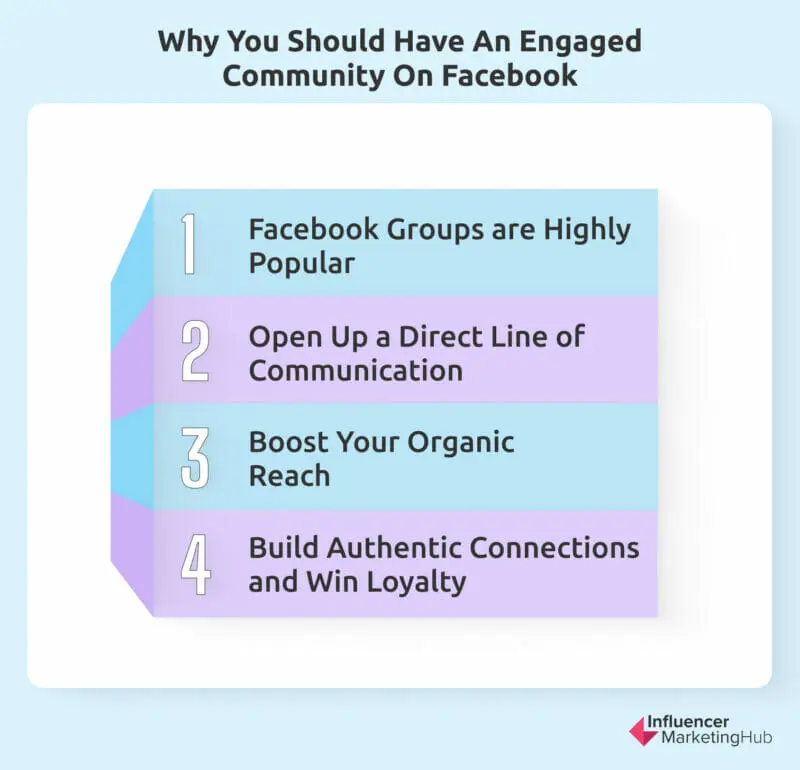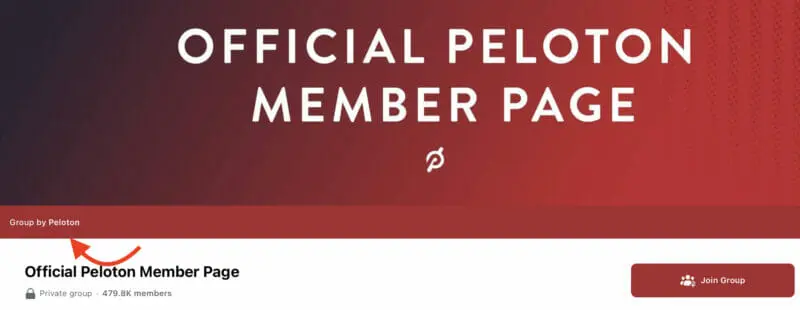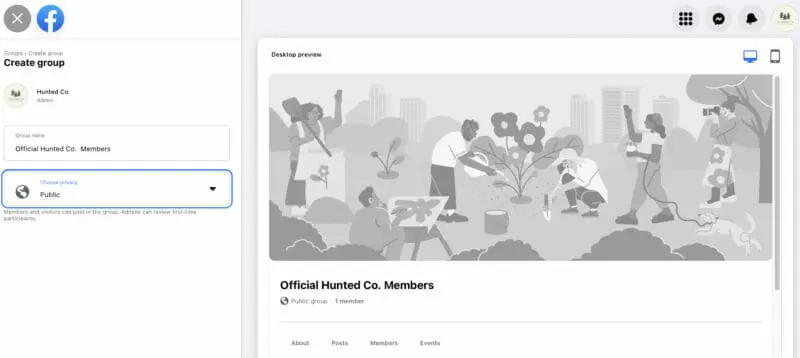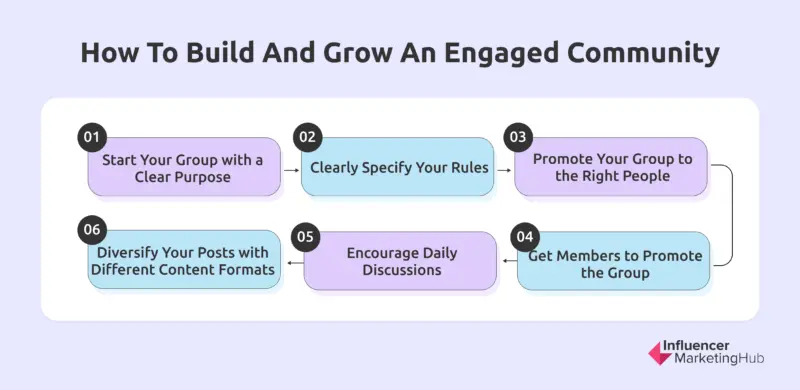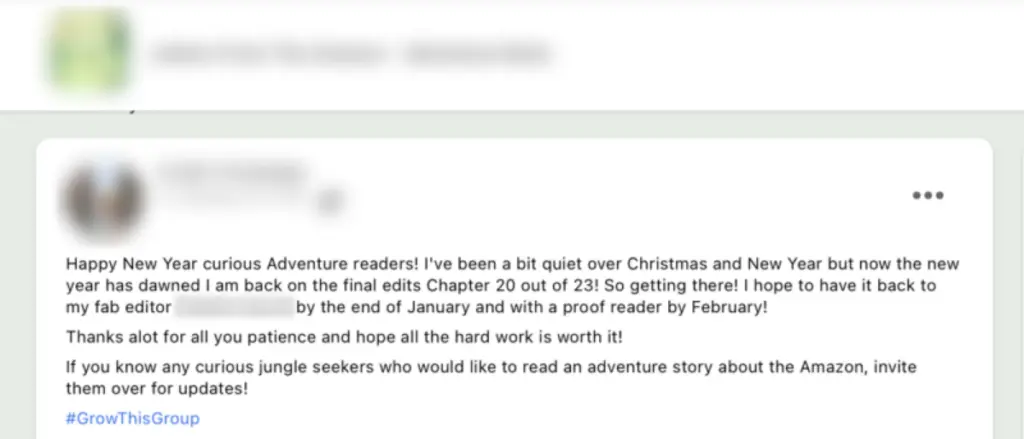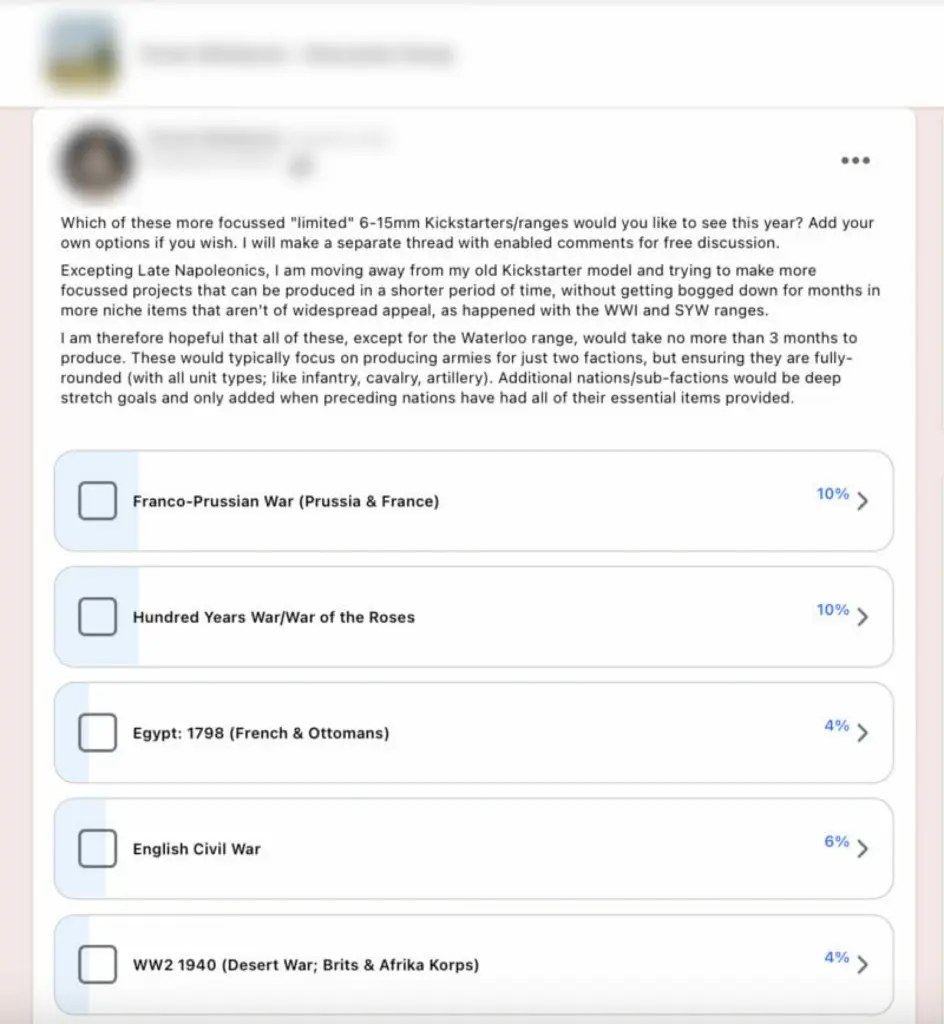When you have an engaged community around your brand, you stand a better chance of earning loyal customers who would choose you over any other brand. That’s why channels such as Facebook Groups are so crucial for brands as they offer a place to connect with the audience and build a loyal community. You can use these groups to share tips and tricks or listen to feedback and grievances from your audience, allowing you to nurture them and turn them into real connections.
So what are Facebook Groups anyway and why do they matter so much for brands? More importantly, how can you leverage them to build and grow an engaged community? Read on to find the answers to your questions.
What is a Facebook Group?
Facebook Groups are essentially a community that’s built around shared interests or goals. For example, there may be a Facebook Group consisting of crochet enthusiasts or a Group for people who need help finding rooms for rent. Users can join these Groups and participate by sharing posts with the community and commenting on posts from admins or other users.
Facebook Group vs. Facebook Page: What Makes Them Different?
A Facebook Group is intended to be a community of users with shared interests whereas a Facebook Page is a place for businesses, organizations, and public figures to connect with their audience. The latter tends to be completely public and serves as somewhat of a mini website within the Facebook platform. This means that it’s mainly for the brand to create content and share updates with their followers. While followers will have the option to comment on the Page’s posts, they won’t be able to post directly on the Page.
However, Facebook Groups can either be made public or private. For example, the Official Peloton Member Page Group is set to private so only members can see the posts.
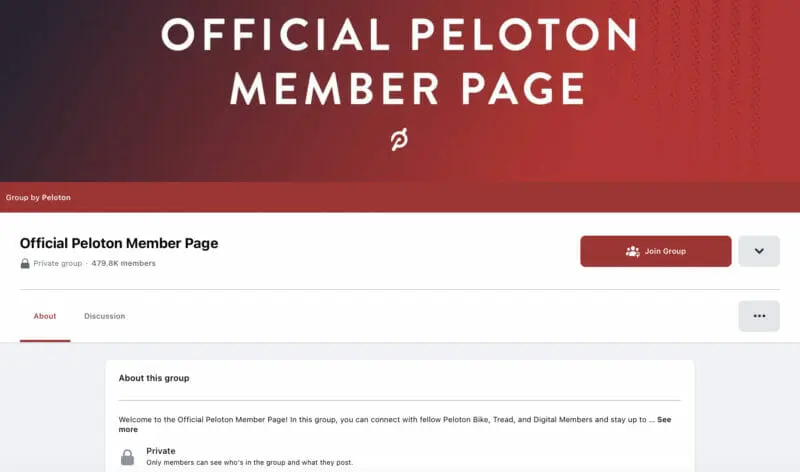
Source: facebook.com
Most Groups allow for two-way communication between the creator and the members, so Group members may even have the option to create a post and share it with the rest of the Group. Others may restrict their privacy settings to allow only certain types of post formats or even disable certain features.
The Importance of Having an Engaged Community on Facebook
If your brand already has a dedicated Facebook business Page, you may be wondering why building a community through Groups is necessary. After all, you’re already sharing updates and information through your Page, right? But check out how building an engaged community through your Facebook Group can benefit you.
1. Facebook Groups are Highly Popular
With Facebook being the biggest social media platform, it’s also no surprise that the platform’s Groups feature sees a ton of usage. According to the latest Facebook stats, more than 1.8 billion people are using Facebook Groups every month. That’s about half of its monthly active users, indicating that Groups are very popular with the platform’s audience.
Considering this, you can expect to see a ton of usage for your Facebook Group. With so many people actively using this feature, there’s a good chance that you’ll get your audience to join your community.
2. Open Up a Direct Line of Communication
Having a Facebook Group dedicated to your brand community allows you to create a direct line of communication with your audience. When someone decides to join your Group, they’re actively signing up to hear from your brand and communicate with you. In return, you’re providing them with the platform to directly engage with your brand.
3. Boost Your Organic Reach
One of the most important benefits of building your community through Facebook Groups is the ability to improve organic visibility. The Facebook algorithm prioritizes Pages and Groups that a user regularly engages with. This means that when you have an engaged community of Facebook Group members, the platform will likely prioritize your Group’s content on said user’s feed.
4. Build Authentic Connections and Win Loyalty
When engaging in Facebook Groups, members have to post from personal accounts. This means that your team will have to use their personal accounts to interact with other Group members, enabling you to add a human touch to your communications. As a result, you can build a stronger, more authentic connection with your audience and gain their loyalty.
In fact, recent studies reveal that 98% of Facebook Group members feel a sense of belonging by being part of a Group. Your Facebook Group could serve as the perfect channel to create a sense of belonging among community members, which will then make them more likely to develop loyalty toward your brand.
Steps to Create a Facebook Group
Now that we’ve established how important Facebook Groups are for your business, it’s time to get technical. Follow the steps below to create your first Facebook Group.
Step 1:
First, make sure you’re logged into your official Facebook brand account. It’s important to ensure that the group is created as your brand so that your brand name shows up in the “Group by” field on the top of the Group name.
Step 2:
Go to your Facebook homepage and click on the menu button at the top of the page. Then select “Group” in the Create drop-down menu.
Step 3:
Add a name for your Group and choose the privacy setting. You can always change your privacy settings later on, so this selection isn’t final. As for the Group name, it should be recognizable and understandable to ensure that people can instantly associate it with your brand’s official Facebook Group. Then select “Create” and that’s it–you’ll now have a Facebook Group for your brand.
Step 4:
While the Group can be used as is, it’s important to customize it a bit to make it yours. This would include uploading your community photo, adding Group rules, and setting permissions and roles. You can also invite a few friends to get the community going. Invitations can either be sent to your Facebook friends or via email to your email subscribers.
Tips to Build and Grow your Community through Facebook Groups
While creating a new Facebook Group is easy, the challenge lies in growing that Group and building an engaged community. So here are a few tips to help you get a strong start.
1. Start Your Group with a Clear Purpose
First, ask yourself why you’re creating a Facebook Group in the first place. When there’s a clear purpose in place, you can get a better sense of direction on what to do with your Group. From the types of audience you want to invite to the kind of content you want to create–there’s a lot that can be determined simply by defining your purpose.
When you’ve built a Group with a defined purpose, you can create a more meaningful experience for community members. Additionally, you’ll also be able to attract the right types of members who will find value in your community. To determine your purpose, ask questions like:
- Do you want your Group to solve problems and answer questions?
- If yes, what kind of problems will it solve and what kind of questions will it answer?
- Will you collect feedback through the Group?
- How will you use the feedback collected from community members?
- How will the Group contribute to your overall brand marketing strategy?
2. Clearly Specify Your Rules
For your Group to effectively serve its purpose, you need to have rules firmly in place from the start. This will help you maintain the quality of conversations and interactions that you want to see as you can prevent members from posting spam and promotions from other brands/businesses.
Moreover, having rules in place can keep your Group more organized since you’re clearly specifying what types of posts you expect from members. The specific rules can vary for each Group, but at the most basic level, you should specify the following details:
- What types of content members are allowed to post and how they should post it
- Whether it’s permitted to share links in the Group and what types of links are permitted
- How members are expected to interact with one another
Additionally, make it clear that spam or promotions are not allowed. Check out the list of Group rules for the official Canva Design Community. The brand clearly specifies what the group is for (talk about design and Canva) and what it’s not for (getting support).
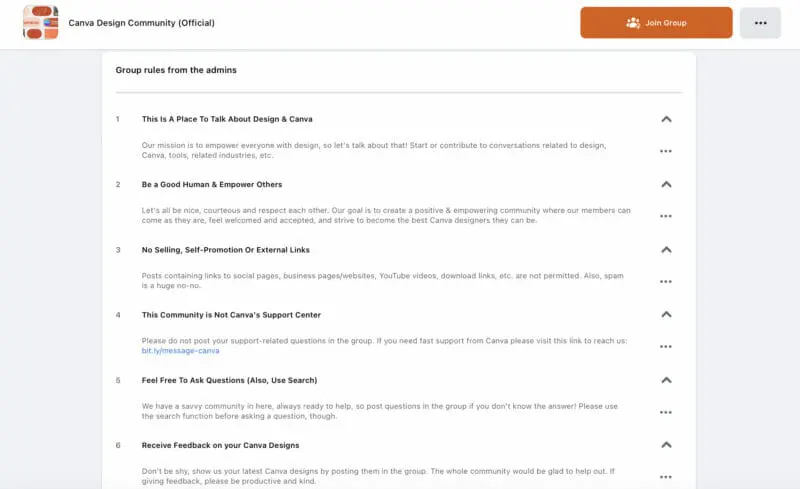
Source: facebook.com
3. Promote Your Group to the Right People
The main challenge about creating a Facebook Group is getting people to join in the first place. This makes it crucial to effectively promote it to the right people so you can start building the community you want. It’s important to get your Group in front of people who are likely to find it valuable and, therefore, are likely to join.
So you can start by promoting it through your brand’s Facebook Page and send out invites to friends who might be interested in the community. Additionally, make sure you spread the news with your email recipients. Since your mailing list consists of people who opted in to hear from your brand, they may also be keen on joining a community where they can get regular updates and interact with like-minded individuals.
Some brands may even invest in paid Facebook ads to promote their Group. This can be an effective way to get your Group in front of even more people and improve your chances of building a bigger community.
4. Get Members to Promote the Group
Once you’ve gained a few members, you can also encourage them to promote the Group with their connections. There’s a good chance that Group members might know other people who would be interested in joining your community. So make sure you’re regularly asking members to share the Group with their friends and acquaintances.
Here’s an example of a simple request asking members to invite their friends to join the Group. To sweeten the deal, you could even offer incentives in exchange for successfully recruiting new members. Turn it into a fun challenge that would get people more excited to participate.
5. Encourage Daily Discussions
The more active your Group is, the more likely people are to engage with it. This will then help you gain better organic visibility in the feeds of relevant members. To ensure a higher level of activity in your Group, you should make it a point to drive discussions on a daily basis.
Having a content calendar or posting schedule in place will make it easy to maintain discussions on a daily basis. Clearly outline what you will be posting on each day of the week, so you don’t have to come up with fresh ideas daily. For example, you may dedicate Mondays for motivation, Thursdays for a little throwback, and Fridays for member recognition.
6. Diversify Your Posts with Different Content Formats
On that note, it’s also important that you diversify your Group content by experimenting with different formats. Don’t just stick to text posts and image posts, and make sure you’re also creating a healthy amount of Reel and video content. You could also host Live sessions to further engage your audience.
Polls are another great way to drive interactions within your community. These are simple to set up and don’t require members to type in a long message to participate. They only need to select an option that resonates with them and that’s it. Since it’s so easy to participate, you’re likely to see tons of engagement in these polls.
Polls are also a great way to gauge people’s opinions about what they expect from you. You could create a poll asking them about what content they’d like to see from you, which products they need, or what topics they want to discuss. This allows you to effectively involve community members, making them feel a sense of belonging and involvement.
Start Your Facebook Community Today
Having a strong an engaged Facebook community is the key to garnering customer loyalty, and Facebook Groups are the perfect place to build that community. Use the tips provided above to start your Facebook community today.
Frequently Asked Questions
How do you grow a community group on Facebook?
You can grow a community group on Facebook by engaging consistently and encouraging members to invite their friends.
How do I increase my Group members on Facebook?
You can increase Group members on Facebook by inviting the right people and constantly engaging your community for increased organic reach.
What is the difference between a Facebook Page and a Facebook Group?
A Facebook Group is intended to be a community of users with shared interests whereas a Facebook Page is a place for businesses, organizations, and public figures to connect with their audience.
What is the limit of a Facebook Group?
There’s no limit to the number of members you can have in a Facebook Group.
Is it better to have a private or public Facebook Group?
This entirely depends on the purpose of your Group. But if you want to keep things more organized and exclusive, keeping your Group private would be ideal.

